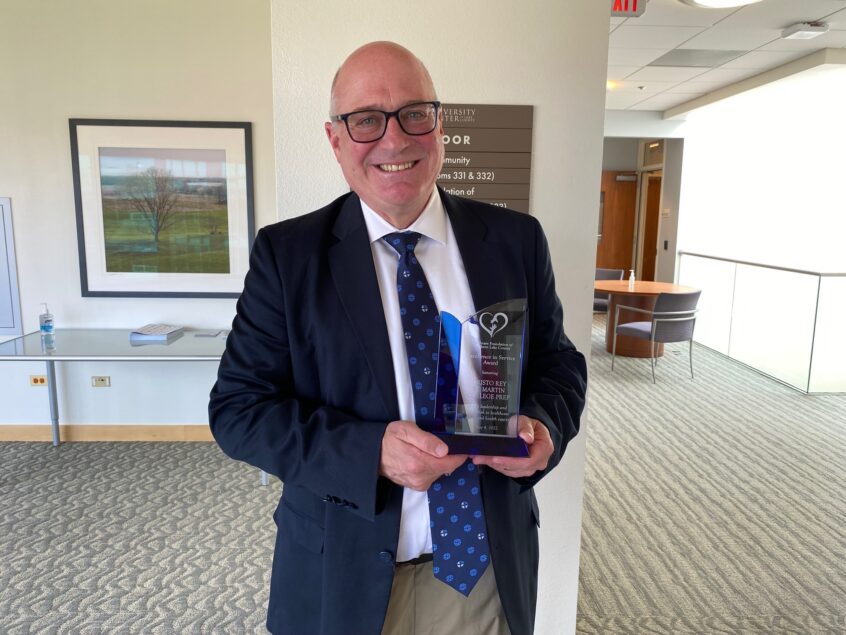
by admin | May 31, 2022 | Development
The Healthcare Foundation of Northern Lake County awarded CRSM a $15,000 grant for its extensive health outreach efforts to students and families during the COVID-19 pandemic.
CRSM was honored for “providing extensive parent education, mobile food drives and vaccination clinics to help families and Waukegan area neighbors during the pandemic,” said Earnest Vasseur, Executive Director for the Healthcare Foundation.
The Healthcare Foundation of Northern Lake County supports efforts that improve access to health services for underserved Lake County, IL residents. They are focused on addressing gaps in health services; increasing the capacity of effective organizations and programs; and fostering innovative solutions to persistent healthcare access problems.
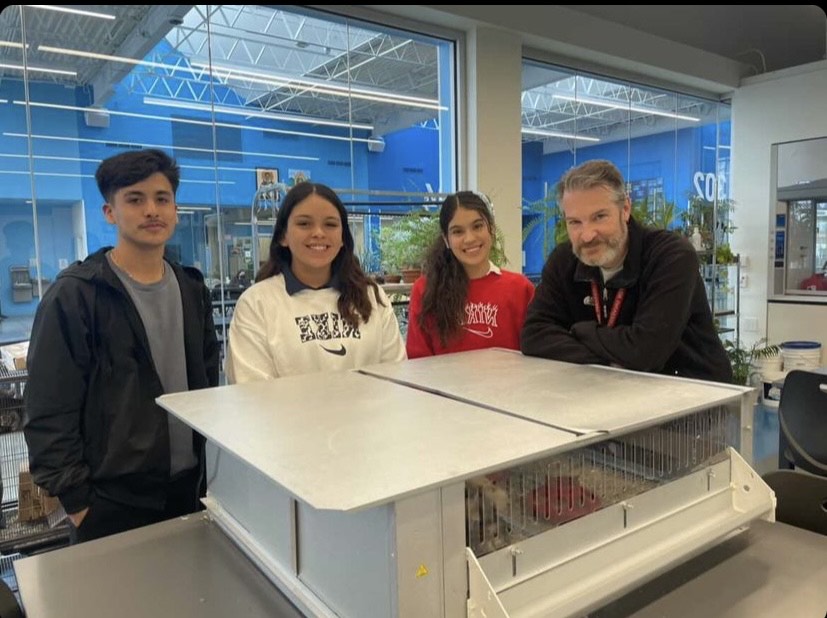
by admin | Apr 1, 2022 | Academic
When CRSM teacher Chris Call and his family were suddenly uprooted from their home following a fire last week over Spring Break, juniors Eileen R., Ashley F. and Noe L. immediately teamed up to raise awareness and bring hope to their cherished teacher.
Call has been a biology, anatomy, physiology, and environmental sciences teacher at CRSM for seven years. “Mr. Call is more than a teacher to us, he is a friend, part of our family,” said Eileen. “We felt compelled to help him after all he has done for us.”
The students turned to social media and set up a GoFundMe page to help their science teacher and his family immediately after they heard about the fire. By Tuesday night, they had raised $4,297, four times their goal of $1,000. The sums tallied fast — in amounts of $10, $15, $25 and $100s — from students, alumni, and teachers. Within five hours of posting, the students raised $1,000 and the sums, big and small kept coming. The students have since taken down the page.
“These are students who immediately gave from their hearts all they had to give,” said Marlene Eby, assistant principal.
With Katie, the family’s yellow Lab mix at his side, Call thanked the students at the assembly Friday.
“I am so very grateful to the CRSM students, staff, alumni and community for this incredibly thoughtful and generous gift,” said Call explaining that Katie almost died of smoke inhalation and carbon monoxide poisoning during the fire. “As a teacher at CRSM I have taught and nourished the value of being a person for others, but it never occurred to me that I might be one of those others. Now Eileen, Ashley and Noe have taught me the importance of that lesson and the impact it can have on those in need.”
“The funds they raised will go toward Katie’s veterinary expenses, and we are hopeful that she will make a complete recovery. On behalf of her and the rest of my family I thank you all for the caring you have shown. I feel truly blessed”.
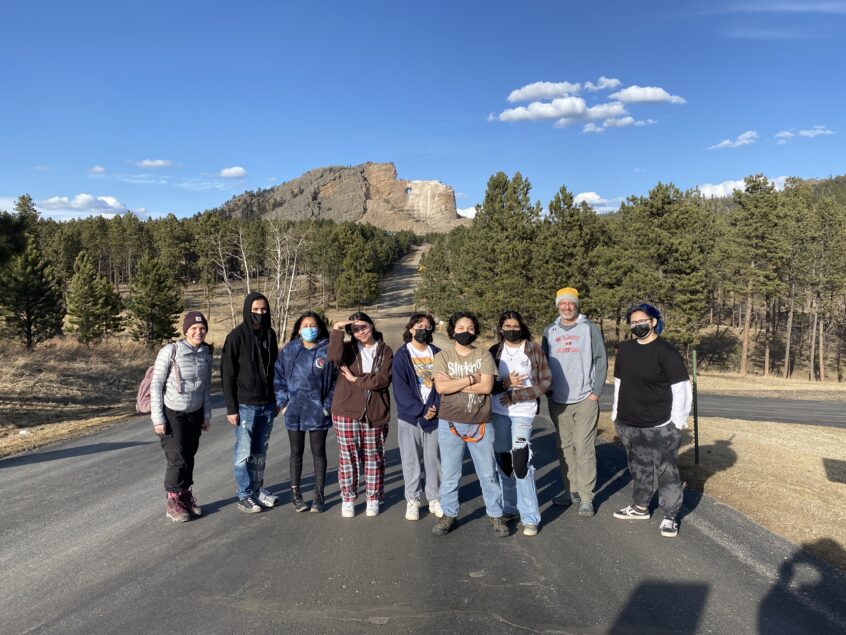
by admin | Mar 31, 2022 | Campus Ministry
During Spring Break, eight CRSM students traveled to South Dakota to visit Red Cloud High School, a Jesuit and Lakota high school on the Pine Ridge Indian Reservation.
The 1,000-mile bus trek marked the fifth journey our Waukegan high schoolers have made to form new friendships, gain cultural understanding and appreciation of the Lakota tribe traditions and experience contemporary life on the reservation. It is part of a mutual exchange and Red Cloud students will be visiting CRSM in May.
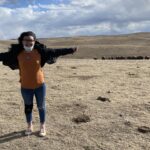 From hiking seven miles to Black Elks peak, to shadowing students at school, to participating in a native Inipi Ceremony (Rite of Purification) and Catholic Mass, dining on Indian tacos and immersing themselves with their new friends in the Lakota culture, CRSM students returned brimming with stories about their experience. Some have dubbed their newly formed understandings of one another’s languages “Spakota,” meaning newfound combinations of Spanish and Lakota. says Jim Dippold, Director of Campus Ministry who, along with college counselor, Sharon Holdvogt accompanied students. For photos, click here.
From hiking seven miles to Black Elks peak, to shadowing students at school, to participating in a native Inipi Ceremony (Rite of Purification) and Catholic Mass, dining on Indian tacos and immersing themselves with their new friends in the Lakota culture, CRSM students returned brimming with stories about their experience. Some have dubbed their newly formed understandings of one another’s languages “Spakota,” meaning newfound combinations of Spanish and Lakota. says Jim Dippold, Director of Campus Ministry who, along with college counselor, Sharon Holdvogt accompanied students. For photos, click here.
Here, senior Fernanda shares a powerful reflection on her experience:
Quiero empezar dando las gracias por tomando el tiempo para leer esto, espero que les inspire como me ha inspirado a mí. I want to start off by thanking you for taking the time to read this as I hope it inspires you as much as it did to me.
Going to Red Cloud High School was an amazing experience that taught me so much. I’m not going to lie, at first, I was really nervous since it was my first time traveling so far away. However, arriving on the reservation felt like a breath of fresh air. Seeing all the cows and horses on the fields and the mountains on the horizons, it’s a view that felt unreal.
Being a city girl all my life, made me value the land so much more. I had the opportunity to climb to Black Elk’s Peak. At first, it seemed like a task too hard for me to handle. I luckily had Ms. Holdvogt and my friend Diana by my side. With their support, we climbed the mountain like champions. Getting to the top of the peak was truly an unreal feeling, the sense of accomplishment it gave me to see the beautiful mountains. It made me realize how beautiful our world truly is. The first thing I did when I got to the top was called my parents. I wanted to show them what I was able to accomplish with their love and support and help them realize that it was because of them I’m here.
I had the chance to see how connected the students are with their land and their culture and it helped me value and appreciate my culture a lot more.
To the Lakota people, their land is sacred and their culture is their identity. Getting the chance to learn about their history made me respect the Lakota people and all Native Americans for how passionate and strong they have been fighting to keep their culture alive.
Talking to the students, I learned that their language is dying since many of their elders died during the Pandemic. Now more than ever, the students are trying their hardest to educate themselves in Lakota and continue what their elders once did.
Seeing how the students appreciated their culture made me recognize the value of my culture. While I don’t always recognize it, my culture is my identity. My grandparents won’t live forever and my culture is in my hands to continue. Like many other students, we don’t recognize the beauty of things until someone helps us recognize the true value.
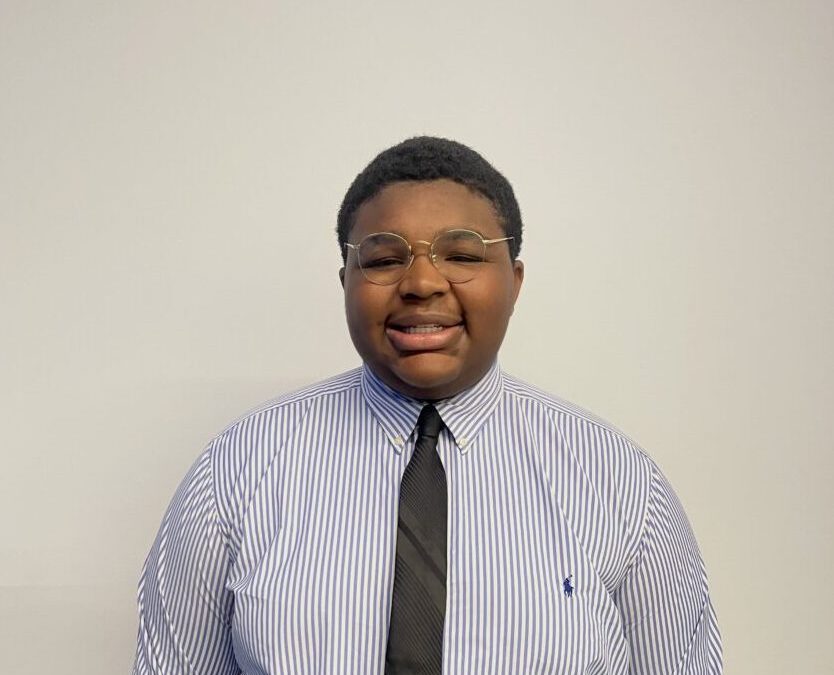
by admin | Mar 31, 2022 | Academic
With 32 college acceptances already under his belt, CRSM senior Joshua Davis was one of the students featured in a Chicago Tribune/Lake County News Sun March 25 story. Josh was attending an event promoting historically Black colleges and told the reporter: “I want to be around successful people who look like me.”
Davis was one of more than 200 high school students who attended Waukegan Township’s HBCU Experience during Spring Break at Waukegan High School’s Washington campus to learn about educational opportunities at the country’s historically Black colleges and universities (HBCU).
Davis, a College Bound Opportunities scholar who is president of the Student Ambassadors and the National Honor Society and vice president of CRSM’s Black Student Union, said he plans to attend a historically Black college or university, though he has yet to decide which one. “I feel it is a place where I will feel at home,” Davis said.
Through his Corporate Work Study job, Davis works as a background credit investigator at Discover Financial Services and plans to pursue a career in cyber security. His top choice so far is Benedict College in Columbia, South Carolina, a private co-educational liberal arts institution.
Davis, whose GPA is 3.54 and is the oldest of three from Zion, said the most important lesson he has learned at CRSM is “to make connections and don’t be afraid to ask for help. I was a struggling student my freshman year, but I learned that all the teachers are here to give you moral support and help you reach your potential.”
by admin | Mar 1, 2022 | President’s Pen
The New York Times ran a story this morning about classroom disruptions from COVID and how they have adversely impacted students. One quote that jumped out stated, “There is now a consensus that children learned much less than usual – and that their mental health suffered – when schools were shut for months in 2020 and 2021. [Disruptions also created] problems for parents, especially working-class parents who cannot do their jobs remotely as easily as many white-collar professionals can.”
The developers of the widely used MAP Growth assessments recently released a report that corroborates these findings. In a brief released in December 2021 from Northwest Evaluation Association’s (NWEA) Center for School & Student Progress, researchers summarized:
- Achievement was lower for all student groups in fall 2021; however, historically marginalized students and students in high-poverty schools were disproportionately impacted, particularly in the elementary grades we studied.
- Student gains across the pandemic (from fall 2019 to fall 2021) lagged norms for pre- pandemic growth, especially in math.
Many educators I spoke with say their schools are also struggling with unusual student behaviors as they returned to full-time instruction this year. An education-based newsletter, Chalkbeat, published a story in September 2021 that captured some of the issues, “Schools across the country say they’re seeing an uptick in disruptive behaviors. Some are obvious and visible, like students trashing bathrooms, fighting over social media posts, or running out of classrooms. Others are quieter calls for help, like students putting their head down and refusing to talk.”
Lower achievement and lagging gains are very real. Unusual student behaviors are predictable fallout from the stress, anxiety, isolation, and general suffering our families, students, and teachers suffered over the last two years. The two are clearly related. Higher functioning skills like problem solving, behavior regulation, and critical thinking cannot be accessed or practiced if one is dealing with high anxiety and stress. You can’t do long division if you are being chased by a bear! Isolation, uncertainty, fear combine to push us into a flight-or-fight response.
Thankfully, as our academic team and counselors began planning for this school year, they had the foresight to bring in a psychologist with expertise in enhancing a school’s “ability to support the social and emotional needs of their students. Specifically… helping schools build student resilience within a trauma-responsive framework.” Doug Bolton came in before school started, again in the middle of the first semester, and again just this last month to work with our faculty.
Essentially, the way to combat trauma and the survival-type responses it elicits is to find ways to provide a stable, safe, and supportive environment – an environment where higher-level cognitive functions can take place. An indispensable element needed to create such an environment is through respectful, caring, trust-based relationships. I believe it is difficult, if not impossible, to nurture relationships of this kind in a remote or virtual environment.
When the pandemic hit in March 2020, CRSM went fully remote for the remainder of the school year. We held full-time, in-person summer school and then, because of distancing requirements, went to a hybrid model for the 2020-21 year where students could attend in-person classes two days/per week. Many other schools remained fully remote. Throughout last year, we held regular volunteer opportunities to distribute food in our parking lot and held vaccine clinics when shots were scarce. The events created opportunities for faculty, staff, and students to come together in a meaningful way to contribute positively to the greater community. We held Summer School again full-time and in-person and have been full-time, in-person for the entire year this year.
By doing everything possible to maximize in-person interactions while still following the science, CRSM was really focused on creating opportunities to keep and build relationships with our students. As COVID cases and deaths wane in the U.S., CRSM seems better positioned to rebound than most other schools.
Our academic results for the first semester of the 2021-2022 school year certainly point to a huge rebound. They are simply astounding. Here are just a few examples:
- The most recent academic ineligibility list came out today and we have ten students below a 2.0 GPA – that’s 10 students for all four grades: 10 out of 400 (2.5%)!
- 81% of all CRSM students have a 3.0 GPA or higher and
- 97 students (over 24%) have a 4.0 GPA.
These statistics are better than any of CRSM’s pre-COVID accomplishments! Myriad factors contribute to this level of success. With few exceptions, our students come from close families and hard-working parents. CRSM teacher retention has been very strong throughout the pandemic. Our teachers have made herculean efforts to engage and support their students. Our counselors have been in overdrive checking in on students. The Corporate Work Study Team shifted away from getting more paying jobs and ensured that every student had a real job with 75% of the students working in-person at their job sites.
So far, this school year has been marked by joy and camaraderie – feelings that only come from a happy, productive school culture. Our teachers’ deliberate and intentional focus on relationships is a big part of what is making a difference. Here are three quotes from Doug Bolton’s excellent presentations that could easily describe CRSM today:
“Brains grow best in the context of supportive relationships.”
Louis Cozolino (professor of psychology at Pepperdine University)
“It is the experience of loving and being loved that most closely predicts how we
react to the hardships of life. Human attachments are the ultimate source of resilience.”
George Vaillant (Director of Research for the Department of Psychiatry at Harvard Medical School’s Brigham and Women’s Hospital)
“How else, except through connection, can people be reminded of their goodness.”
Father Greg Boyle (founder of Homeboy Industries)
We are better when we are together. ¡Viva Cristo Rey!




 From hiking seven miles to Black Elks peak, to shadowing students at school, to participating in a native Inipi Ceremony (Rite of Purification) and Catholic Mass, dining on Indian tacos and immersing themselves with their new friends in the Lakota culture, CRSM students returned brimming with stories about their experience. Some have dubbed their newly formed understandings of one another’s languages “Spakota,” meaning newfound combinations of Spanish and Lakota. says Jim Dippold, Director of Campus Ministry who, along with college counselor, Sharon Holdvogt accompanied students. For photos,
From hiking seven miles to Black Elks peak, to shadowing students at school, to participating in a native Inipi Ceremony (Rite of Purification) and Catholic Mass, dining on Indian tacos and immersing themselves with their new friends in the Lakota culture, CRSM students returned brimming with stories about their experience. Some have dubbed their newly formed understandings of one another’s languages “Spakota,” meaning newfound combinations of Spanish and Lakota. says Jim Dippold, Director of Campus Ministry who, along with college counselor, Sharon Holdvogt accompanied students. For photos, 